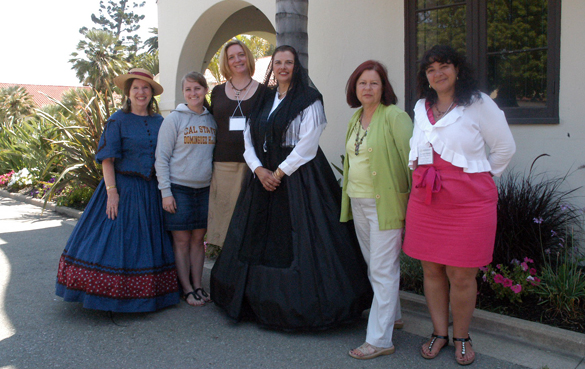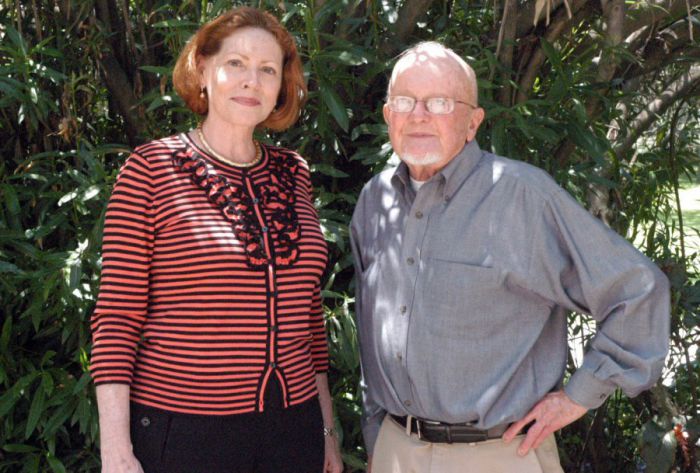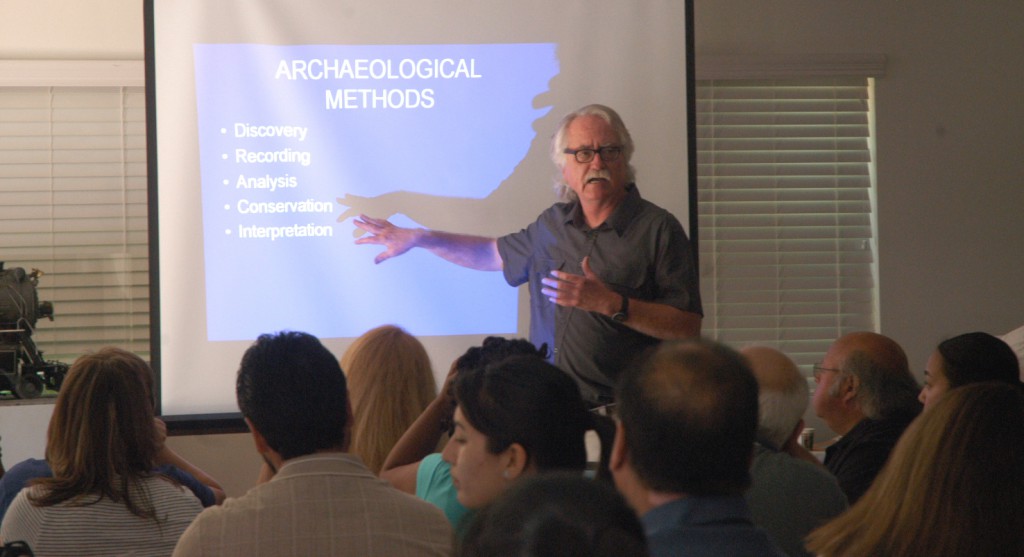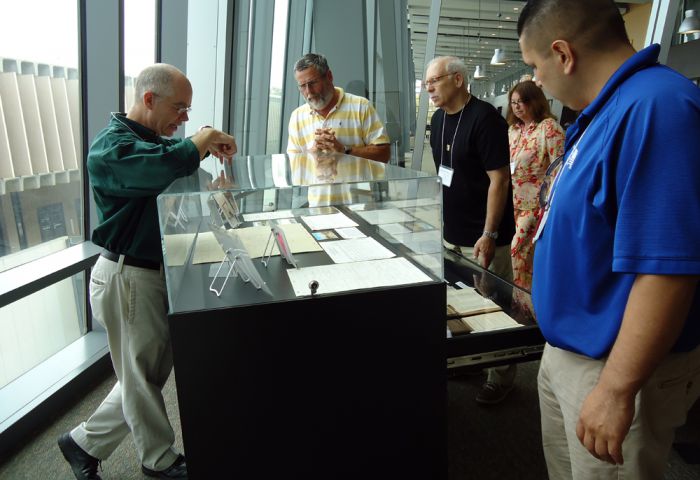Eighty elementary and high school teachers from across the United States spent a week in June at California State University, Dominguez Hills and the nearby Dominguez Rancho Adobe Museum (DRAM) learning about the people and cultures that shaped the Los Angeles region in order to enhance their teaching of American history in the classroom.

Organized by the history department and the Office of Service Learning, Internships and Civic Engagement (SLICE), in partnership with DRAM, “American History through the Eyes of a California Family, 1780s-1920s” workshops were funded by a “We the People” grant from the National Endowment for the Humanities (NEH). Talks and activities were focused on ways to teach history using the story of the Dominguez family, whose members were instrumental in establishing the South Bay and Los Angeles.
CSU Dominguez Hills is named after the land on which it is located, which was part of the first Spanish land grant in California. Seventy-five thousand acres -what is now most of the South Bay, up through Compton – was granted in 1784 by King Carlos III to Juan Jose Dominguez for his participation in expeditions with Gaspar de Portolà and Father Junipero Serra. The land was known from the 18th to early 20th centuries as the Rancho San Pedro and a large portion of it remains in the families of Dominguez descendants today.

Activities included lectures by CSU Dominguez Hills faculty on the indigenous peoples of Southern California and the legacy of the Dominguez family; a visit to the university’s Archives and Special Collections; and field trips to key historical sites including Olvera Street, Chinatown, and the Mission San Gabriel.
Presenters included Marisela Chávez, associate professor of Chicana/o studies; Jerry Moore, professor of anthropology; Thomas Philo, archivist, Archives and Special Collections; and Greg Williams, director, Archives and Special Collections. In addition, Julia Bogany, cultural affairs director of the Tongva Nation in California, and history professors Jane Dabel of CSU Long Beach and Jennifer Koslow of Florida State University participated as lecturers in the workshops.
Richard Solis teaches history at Vincent Memorial Catholic High School in Calexico. He says that his students will benefit greatly from his attendance at the NEH workshops, especially as 95 percent of them are of Hispanic or Mexican origin.
“Out of all of the institutes I have attended, I feel that this ranks up there as one of the most educational and fulfilling,” he said. “This has allowed me to not only learn more about my ancestry but also how California was formed and how it had a large affect on the [rest of the] United States.”
Solis said that one of the biggest eye-openers for him during the workshops was the prominent role of the Dominguez family in the establishment of Los Angeles and California. He said that the story of the Spanish settlers and their efforts to convert the indigenous people to Catholicism through the missions echoed the accounts of European settlers and Indians in other parts of the United States.

“I have a much greater grasp on the ideals of colonialism, what drove nations to enslave the [American] natives, and how religion plays a major role in the creation of colonies,” he said. “My students will have a better understanding of the missions and the development of California and the Los Angeles area, and it will add to their prior knowledge of political, economic, and cultural issues.”
Laura Talamante, an assistant professor of history at CSU Dominguez Hills who applied for the NEH grant along with Cheryl McKnight, SLICE director, and Alison Bruesehoff, DRAM executive director, said that the workshops succeeded in providing multiple perspectives.
“I think [the teachers now] have a much richer appreciation for the importance of California history and its connections to world history,” she said. “We have this British idea of the American past in terms of influences from Europe, but the Spanish presence is also extremely important in California, Florida, New Mexico, and other areas as well.”
Ellen Georgi, who teaches ancient and medieval history to sixth and seventh graders at Urbana Middle School in Ijamsville, Maryland, said that there is very little in her local curriculum on California history beyond the expeditions of John C. Fremont, the Catholic missions, and other European settlements. She said that current demographic trends on the East Coast have brought its population “full circle.”

“Maryland has experienced a doubling of the Hispanic population in the last year, if not more,” she said. “All up the East Coast, there’s been a huge change ethnically. The curriculum needs to reflect our changing population.”
Bruesehoff said that it was exciting to have scholars from across the nation at the rancho and to see during the workshop’s final meeting how they would present their knowledge to their students back home.
“Some are comparing the Dominguez sisters to important people in their towns,” she said. “Two of the teachers are going to use the Dominguez family to talk about economics, and free trade.
“It’s interesting to see teachers ‘get’ California history for the first time, and [learn] that it doesn’t just start in 1848 with the end of the Mexican-American War. It began a lot earlier and there was a lot happening. It’s nice to see the Dominguez family story and our California history [about to] go throughout the U.S.”

Judson Grenier, emeritus professor of history who was one of the workshop’s lecturers, underscored the importance of recognizing the ways that the entire nation is linked through a history that is not linear, but interdependent.
“To teach the history of colonial America or the Civil War totally apart from California history is to present a distorted picture of the past,” he said. “Similarly, the development of California should not be presented in isolation. The teachers who took part in the workshops gained a broader perspective of that vital linkage.”
Bruesehoff said that the collaboration over the workshops between DRAM and CSU Dominguez Hills represents the value of both institutions as educational partners.
“Doing the workshops jointly stresses the research elements that both institutions have,” she said. “There are primary sources at Cal State Dominguez Hills, and there are primary sources at the Rancho. By using them together, we can make a lot of connections.”